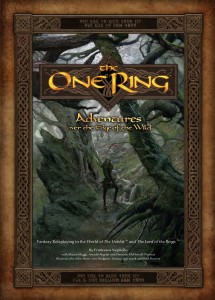A couple of people (store owners and others) have bought more than 1 OD&D poster at a time. Sending bulk posters is easy and fun, so if you buy multiple posters, all posters after the first will be half price ($3.25) with no extra shipping. If I can figure out how to do bulk pricing in PayPal, I’ll do that; otherwise I’ll just send you a paypal refund as soon as your order comes in.
bulk wandering monsters posters 50% off
October 6th, 2011buy this OD&D Illustrated Wandering Monster poster!
October 5th, 2011I originally drew this poster for the Gygax Memorial. I sold out of my first run at Gen Con for $10. Now you can buy them for $7.50!
The 18×24 poster contains the complete rules for random dungeon and wilderness encounters in infographic format, and illustrations of every single OD&D Brown Box monster (200+ monsters), including the rarely-used ones like “thoat,” “thoul” and “titanotheres.”
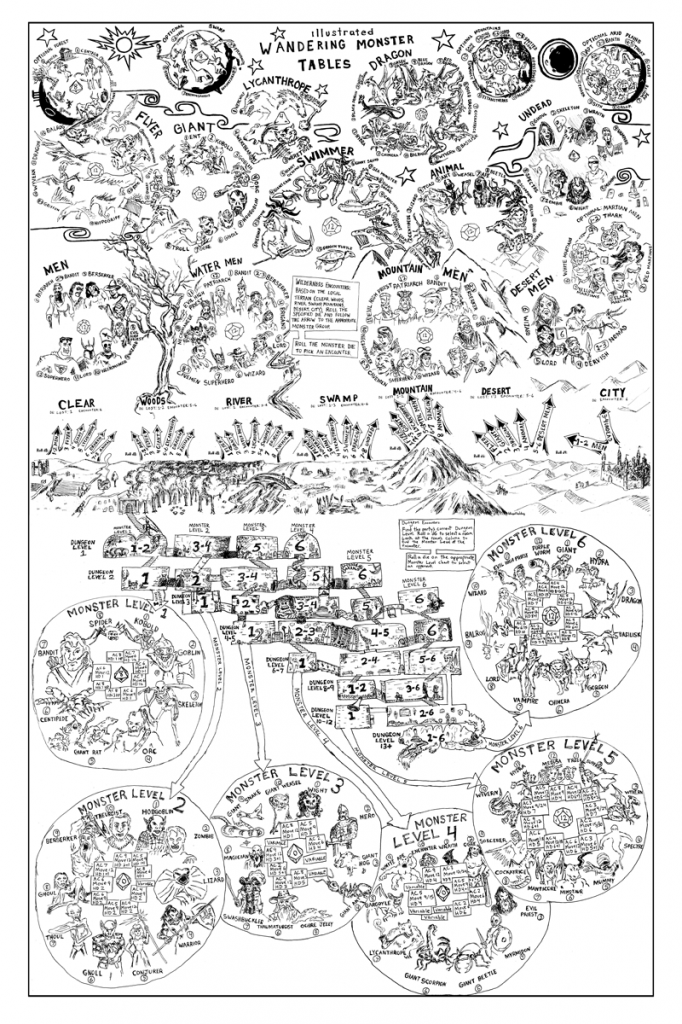
Put this on your rec room wall, and you can use it to generate random encounters without having to flip through books, or just stare at it glassily while descending into a spiral of madness.
Price: $7.50 + shipping
Sold out!
This poster is currently sold out, but I’m running a kickstarter to get it back in print, and also to print a new poster, “Random Dungeon Generator as a Dungeon Map”. Check out the kickstarter and help me get the poster back in print!
real-world taboos and their d&d effects
October 3rd, 2011If, in D&D, superstition is always right, then cultural taboos are to be doubly respected. Many of the magical ills in the D&D universe arose because someone violated a taboo.
When someone violates a taboo, have them make a saving throw. If they fail, they may contract the curse appropriate to their crime.
cannibalism: If you eat of your own kind, you’re likely to contract a disease that causes your hair to fall out, your flesh to whiten, and your teeth to hunger for more human flesh. In the disease’s final stage, you become a ghoul, and you will spread your disease to those you kill. Let that be a lesson to you: if you’re stuck in a cave-in, the human should eat the elf corpse and vice versa.
murder of kin: The curse attendant on brother murdering brother is attested in one of the oldest sword and sorcery tales of all: the story of Kane, by Karl Edward Wagner. Just kidding. But seriously, kin killing should put you magically outside the pale of society. I’d say that someone who contracts the Kin-Killer’s Mark can’t recover healing surges by sleeping in a settlement, and takes damage, instead of healing, from clerical healing from allies. I wouldn’t be surprised if kin-killing were a necessary part of becoming a death knight, as well.
murder of guests: When you share food with someone, you enter a guest-host relationship in which violence is forbidden. Those who violate this rule are doomed to lose food’s sustaining powers: from now on, they can only sate their hunger with violence and betrayal – in other words, human blood. They become vampires. Consider also vampires’ inability to enter a house without permission: the vampire is constantly forced to enter an explicit guest relationship, and then betray it in a bloody feast, re-enacting the vampires’ initial betrayal of the guest meal.
bestiality: D&D is a world where every monster is half this and half that (or a third!) and it can’t all be the work of mad wizards. Obviously, in D&D, any mating can produce offspring: furthermore, I think that not only will the children be beast-men, but the guilty parents may take on bestial natures as well. This is especially common near the feywild, where every animal species’s nobility can take human form. However, not every satyr goat-herd has the excuse of living near the feywild.
incest: This taboo is most commonly violated by royalty, so much so that its visible effects are often called the King’s Curse. It not only enters the bloodline but affect the parents. The King’s Curse manifests as madness and cruelty. It also often causes extreme physical delicacy (a penalty to fortitude defense).
shoot the sea; play with me
October 1st, 2011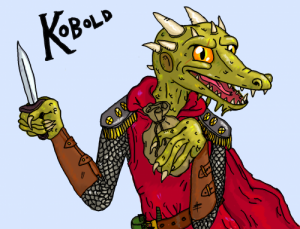 Get your next D&D character portrait at Shoot the Sea, where our friend Anna has drawn tieflings, eladrin, and kobolds so far, and is taking requests.
Get your next D&D character portrait at Shoot the Sea, where our friend Anna has drawn tieflings, eladrin, and kobolds so far, and is taking requests.
Also Dave Arneson Game Day is TODAY! Play some D&D, preferably with robots in it! And if you’re in NYC come by and join my 4e game at Brooklyn Strategist.
the ghost pirates
September 30th, 2011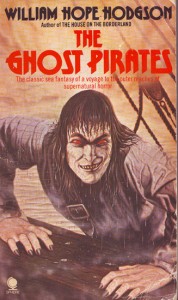 William Hodgson is kind of an amazing early horror writer, and his 1909 “The Ghost Pirates” makes sea travel scary for the same reason that a haunted house or a dungeon is scary: a ship is an isolated environment. It can be even lonelier than a dungeon, because a ship is frequently months away from the nearest port, instead of just outside of town.
William Hodgson is kind of an amazing early horror writer, and his 1909 “The Ghost Pirates” makes sea travel scary for the same reason that a haunted house or a dungeon is scary: a ship is an isolated environment. It can be even lonelier than a dungeon, because a ship is frequently months away from the nearest port, instead of just outside of town.
In “The Ghost Pirates”, the isolation is heightened because the ship seems to be drifting into a twilight zone where they can’t count on contacting the natural world:
It was thus that I came to see something altogether unthought of–a full-rigged ship, close-hauled on the port tack, a few hundred yards on our starboard quarter. … Away aft, hanging from the gaff-end, was a string of flags. Evidently, she was signalling to us. All this, I saw in a flash, and I just stood and stared, astonished. I was astonished because I had not seen her earlier. In that light breeze, I knew that she must have been in sight for at least a couple of hours. … How had she come there without my seeing her, before? All at once, as I stood, staring, I heard the wheel behind me, spin rapidly. Instinctively, I jumped to get hold of the spokes; for I did not want the steering gear jammed. Then I turned again to have another look at the other ship; but, to my utter bewilderment, there was no sign of her–nothing but the calm ocean, spreading away to the distant horizon.
The ship is drifting into another plane – possibly the shadowfell. In the shadowfell, there are ghosts. And in a book called “The Ghost Pirates”, those ghosts are possibly pirates.
“My idea is, that this ship is open to be boarded by those things,” I explained. “What they are, of course I don’t know. They look like men–in lots of ways. But–well, the Lord knows what’s in the sea.”
And that’s the advantage of the sea as an adventure location: your ship might be skimming above empty sea beds, sea monsters, or a nest of Chthulhus. The Lord knows what’s in the sea.
dave tarneson
September 28th, 2011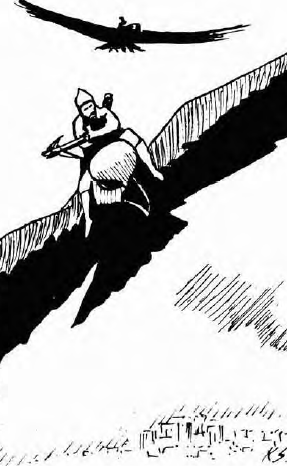 I’m reading Dave Arneson’s First Fantasy Campaign, since I plan to DM for Dave Arneson Gameday. Having just read the first Gor novel, I’m catching references I otherwise would have missed. Dave wasn’t running a full Gor campaign, but I think it was probably about as influential as Edgar Rice Burroughs’ Mars was on Gygax.
I’m reading Dave Arneson’s First Fantasy Campaign, since I plan to DM for Dave Arneson Gameday. Having just read the first Gor novel, I’m catching references I otherwise would have missed. Dave wasn’t running a full Gor campaign, but I think it was probably about as influential as Edgar Rice Burroughs’ Mars was on Gygax.
Take, for example, this price chart, in which Gor’s tarns (riding birds) and pleasure slaves are highlighted:
The mysterious “red silk” and “white silk” slave entries are related to John Norman’s lovingly detailed slave caste system (warning: link not safe for reading).
Also note that on Arneson’s chart, which seems to be ordered by free association, the entry after the slaves is “assassin”. In the first Gor book, the main villain is a member of the caste of assassins.
The Assassin class was first introduced in Arneson’s Blackmoor OD&D supplement. It’s hard to tell how much of that book is Arneson and how much is Tim Kask and other contributors, but I think the Assassin is Dave’s work. If Arneson’s campaign introduced the assassin class, it seems not unlikely that that is another Gor-ism.
Reminder: If you’re in NYC, come to Dave Arneson Memorial Game Day this Saturday! Games all day and a panel at 5! I’ll be DMing at 6.
The One Ring – A Quick and Dirty Review
September 27th, 2011At Gen Con, I purchased The One Ring Roleplaying Game, the newest roleplaying game set in Middle Earth. It has some pretty fun mechanics that help distinguish it from traditional fantasy roleplaying games.
Some highlights below:
- Travel Mechanics: Most systems don’t handle travel very well, mostly leaving it up to the GM to decide what happens when adventurers travel long distance, but this one has a fun system where you plan out your journey and then make travel rolls to see if you increase your fatigue or encounter hazards along the way. These rolls really matter since rolling poorly can leave you less prepared for battle when you arrive at your destination. It is also fun to have a mechanic for handling days or weeks of game time passing during adventures, creating a natural timeline throughout the campaign that requires more thought to replicate in D&D.
- A Surprisingly Fun Encumbrance System: In most systems, encumbrance is ignored or begrudgingly tracked. That’s because for the most part, it involves A LOT of micromanagement as you keep track of every piece of gear, and it just feels like you are trying to stay below a certain number. In The One Ring, you really only track your armor and weapons. Every other piece of reasonable equipment is just assumed to be part of your traveling gear, which has a total rating of 1. You add everything up to determine your fatigue score. If your endurance (the systems equivalent of hit points) ever drops below your fatigue score in combat or otherwise, you are considered to be weary, which means rolls of 1-3 on your d6s don’t count towards success. So you definitely get rewarded for traveling light, since it means you’ll be able to take more hits in combat before being weary, yet at the same time you’ll have fewer weapons to choose from in combat and you’ll be more likely to suffer wounds because of your light armor (see below).
- Wounds and Death: In The One Ring, whenever you or an enemy roll the equivalent of a critical hit, there is a chance of causing a wound. Your armor gives you bonus dice towards avoiding a wound and the difficulty varies depending on the weapon. Wounds don’t hurt your performance in combat, but they do make your more susceptible to dying in or falling unconscious. If you are already wounded and get wounded again, you go unconscious. If you are wounded and go to 0 endurance, you are dying. You are killed outright if you are wounded and then wounded again by the blow that knocks you to 0 endurance! Wounds also make it more difficult to heal after combat. So with this system and the encumbrance system there is a fun tension between wearing lighter armors and risking being wounded more often and wearing heavier armors and become weary earlier in combat.
- Corruption and Shadow: This system mirrors the insanity mechanic in Call of Cthulhu. Basically, when you are exposed to the darkness of shadow or when you do terrible things you must make corruption rolls and risk acquiring points of shadow. If your shadow score ever goes below your hope score (a pool of points you have to gain bonuses to rolls), you risk acquiring a shadow taint that gives you a negative trait. Get enough negative traits (hopefully somewhat rare), and you go insane and lose control of your character! So this is a fun system that mirrors some of the changes we see in characters from Lord of the Rings as they are exposed to the corrupting influence of the Ring of Power.
- Traits: Speaking of traits, these fun things add a nice indie mechanic to things, where you can automatically succeed on rolls if you invoke the appropriate trait. So you might say that OF COURSE you gather the necessary information about rumors around town with your SMOKING trait because, seriously, who wouldn’t sit down with an old hobbit enjoying his pipe and shoot the breeze? You can also invoke a trait to roll on something the DM would normally consider part of the story. For example, if your trait is “suspicious” and the DM ruled that an NPC ran off in the night with the map to the destination you are traveling to, you might argue that your trait allows you to make a perception check to see if they steal the map because OF COURSE you’ve been sleeping with it in your breast pocket ever since they arrived.
- Special Dice: The dice for this game are really cool. There is a d12 with a Gandalf symbol and a Sauron’s Eye symbol in place of the 11 and 12. The Gandalf is an auto success (fun) and the eye counts as a zero (reversed for enemies!). There are also d6s, which are rolled with the d12 as skill dice. The 1, 2, and 3s have different outlines to show that they don’t count if you are weary, and the 6s have a symbol to denote great and extraordinary success if they are rolled! So there are some fun and pretty mechanics rolled up in those dice.
miles of gor
September 26th, 2011You know you’re reading an Edgar Rice Burroughs Mars pastiche when you need to memorize new units for distance and time.
Here are some passages from John Norman’s first Gor book, Tarnsman of Gor:
“What a tarn!” he marveled. “I had a full pasang start, and yet you passed me!” The pasang is a measure of distance on Gor, equivalent approximately to .7 of a mile.
(A tarn is a bird that you fly.)
The shadows of the pasang stones had grown long, and, judging by the angle of these shadows (for the stones are set in such a way as to serve also as sundials) it was past the fourteenth Gorean Ahn, or hour. The Gorean day is divided into twenty Ahn, which are numbered consecutively. The tenth Ahn is noon, the twentieth, midnight. Each Ahn consists of forty Ehn, or minutes, and each Ehn of eighty Ihn, or seconds.
Apparently John Norman gets pretty crazy with the slave girls in later books, but Tarnsman of Gor is a pretty unremarkable ERB Mars clone.
Mars clones are an interesting subgenre: interesting in how boring they are. Most never experiment with the formula in a meaningful way. Here’s what you’ll find in every clone:
- Modern man goes to another world, where he is stronger because of the reduced gravity
- Man bests everyone in all warlike pursuits
- Man learns new systems of measurement, which he is compelled to share with the reader
- Man wins the love of a princess, who is immediately kidnapped
Slavishly formulaic, but I always find them pleasant reading. Some day I plan to make a chart showing the conversions between times and distances from my various not-Mars books, by Norman, Moorcock, Kuttner, Fox, etc.
princess in a treasure chest
September 23rd, 2011He then climbed down from his palm tree and removed the soil with his hands until he had uncovered the chest and freed it from the hole. With a big stone he struck and broke its lock and, after lifting the lid, he looked inside. There he saw a girl in a drugged sleep, with her breast rising and falling as she breathed. She was very beautiful, and was wearing ornaments, gold jewellery and jewelled necklaces, priceless stuff worth a sultan’s kingdom.
-1001 Nights
This variation on the Sleeping Beauty theme provides a good way to fill out a treasure chest. Inside the maiden’s mouth is a pill: if it is removed, she will wake up. She is a princess, kidnapped and held for ransom, but her kidnappers are long dead. She has been sleeping in the chest for thousands of years. She would have been worth a fortune in reward money a few thousand years ago; but the last of her line is long gone. At least she comes with jewelry.
For extra fun, the PCs are following an ancient rumor that, somewhere in the dungeon, there is a beautiful gem of great mystic power. She is it. The princess was known, in her day, as the Jacinth of Inestimable Beauty. She is a powerful enchantress. Too bad her spell books have been dust for centuries.
 Also of note about the princess in the chest: a PC’s innocent question “How big is the chest?” led to a hilarious misunderstanding that ended with the party demanding that I rolled for the princess’s breast size. They were outraged that there was no chart for this in OD&D. I rolled a d6 and got a 2. The girls in the group informed me that that was a B cup.
Also of note about the princess in the chest: a PC’s innocent question “How big is the chest?” led to a hilarious misunderstanding that ended with the party demanding that I rolled for the princess’s breast size. They were outraged that there was no chart for this in OD&D. I rolled a d6 and got a 2. The girls in the group informed me that that was a B cup.I used this gimmick in my last OD&D dungeon crawl. The PCs discovered the sleeping pill in the princess’s mouth when their chaste kisses failed to wake her and they resorted to french kissing.
Although Jacinth was a high-level magic-user, she was useless to the first-level party because both the party elves had randomly rolled “Read Magic” and “Comprehend Languages” as their two spells. Because she was a princess and a magic-user, she wouldn’t engage in physical combat. The pill that grants immortal sleep was actually the most useful part of the treasure.
do you want to play some D&D in NYC?
September 22nd, 2011I’ll be DMing October 1, Dave Arneson Memorial Gameday, at the Brooklyn Strategist.
The Mule Abides has set up a Kickstarter to raise money for Dave Arneson’s charity of choice, juvenile diabetes research.


